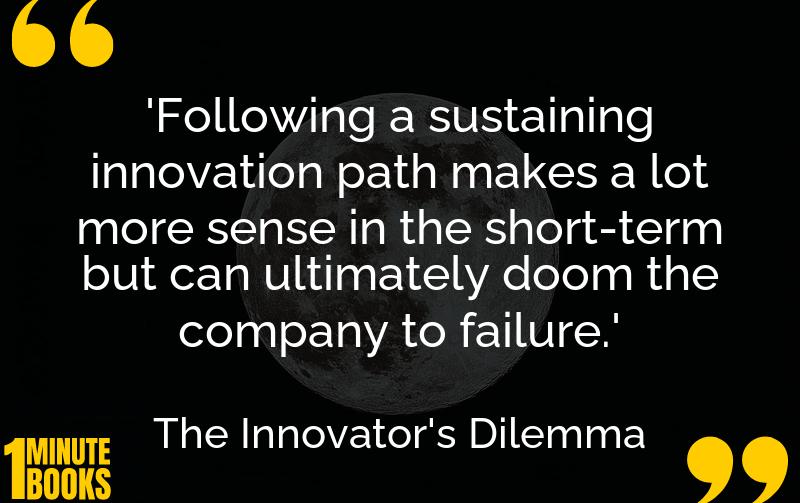
The Innovator’s Dilemma explores why leading companies fail when facing disruptive innovations, highlighting the difference between sustaining and disruptive innovations and their impact on businesses.
Main Lessons
- Understand the difference: Sustaining innovations improve existing products, while disruptive innovations redefine markets.
- Disruptive innovations often have lower initial performance which large companies hesitate to adopt.
- Market leaders are at risk by ignoring disruptive innovations that fulfill future customer needs.
- Niche markets can be breeding grounds for disruptive innovations that eventually capture the mainstream.
- Examples include smartphones with cameras or services like Netflix and Uber shifting major industries.
- Large companies should explore niche markets to identify potential disruptive innovations.
- Startups can capitalize on the disregard of larger competitors by refining their innovations in smaller markets.
- Disruptive technologies may at first seem undesirable due to poorer performance but can evolve rapidly.
- Market leaders need to balance resource allocation between sustaining and potentially disruptive innovations.
- The success of disruptive innovations lies in meeting future market needs rather than current demands.
- Disregarding disruptive potential may lead to strategic pitfalls for established market leaders.
- Both startups and large firms must cultivate an openness toward experimenting with emerging technologies.
- The dilemma is the choice between safe, short-term gains and risky, long-term innovation opportunities.








